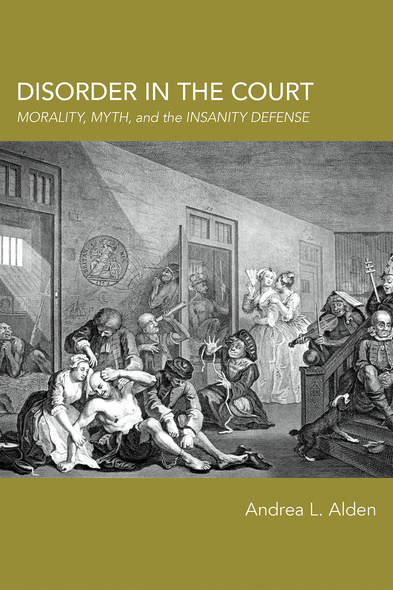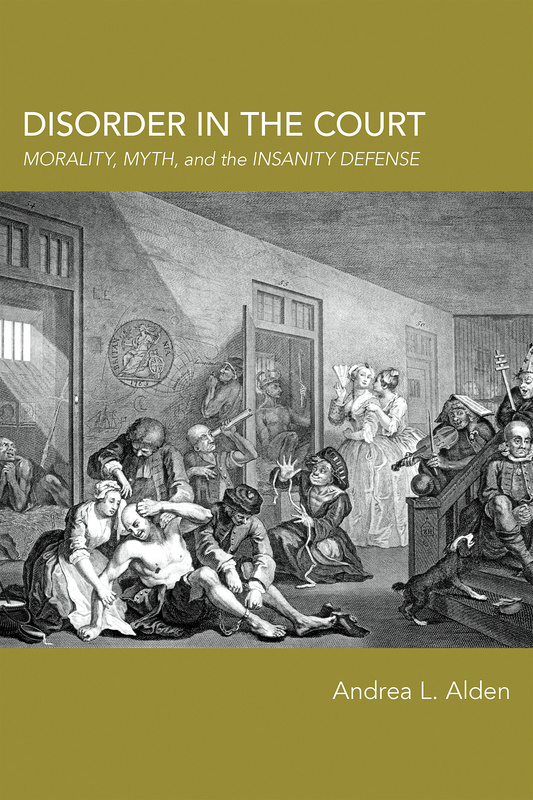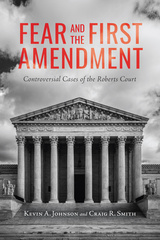Disorder in the Court
Morality, Myth, and the Insanity Defense
The insanity defense is considered one of the most controversial, most misunderstood, and least straightforward subjects in the American legal system. Disorder in the Court: Morality, Myth, and the Insanity Defense traces the US legal standards for the insanity defense as they have evolved from 1843, when they were first codified in England, to 1984, when the US government attempted to revise them through the Insanity Defense Reform Act. Throughout this period “insanity” existed primarily as a legal term rather than a medical one; yet the testimony of psychiatric experts is required in cases in which an insanity defense is raised.
The adjudication of such cases by courtroom practice is caught between two different but overlapping discourses, the legal and the medical, both of which have historically sought to assert and maintain firm disciplinary boundaries. Both expert and lay audiences have struggled to understand and apply commonplace definitions of sanity, and the portrayal of the insanity defense in popular culture has only served to further frustrate such understandings.
Andrea L. Alden argues that the problems with understanding the insanity defense are, at their foundation, rhetorical. The legal concept of what constitutes insanity and, therefore, an abdication of responsibility for one’s actions does not map neatly onto the mental health professions’ understandings of mental illness and how that affects an individual’s ability to understand or control his or her actions. Additionally, there are multiple layers of persuasion involved in any effort to convince a judge, jury—or a public, for that matter—that a defendant is or is not responsible for his or her actions at a particular moment in time.
Alden examines landmark court cases such as the trial of Daniel McNaughtan, Durham v. United States, and the trial of John Hinckley Jr. that signal the major shifts in the legal definitions of the insanity defense. Combining archival, textual, and rhetorical analysis, Alden offers a close reading of texts including trial transcripts, appellate court opinions, and relevant medical literature from the time period. She contextualizes these analyses through popular texts—for example, newspaper articles and editorials—showing that while all societies have maintained some version of mental illness as a mitigating factor in their penal systems, the insanity defense has always been fraught with controversy.
This is a terrific book and one that is long overdue. Disorder in the Court engages two important, but relatively understudied, areas of rhetorical scholarship—the rhetoric of law and the rhetoric of medicine—in order to shed light on the intriguing issue of insanity defenses.’
—Edward Schiappa, author of Beyond Representational Correctness: Rethinking Criticism of Popular Media and coauthor of Argumentation: Keeping Faith with Reason
An important contribution that provides a concise rhetorical assessment of the development of the insanity defense in America.’
—Francis J. Mootz III, author of Law, Hermeneutics, and Rhetoric and Rhetorical Knowledge in Legal Practice and Critical Legal Theory
Acknowledgments
Introduction: Reasoning with Madness
Chapter 1. Framing the Issue: What Rhetoric Can Offer to the Conversation
Chapter 2. A Brief History of Western Thought on Mental Illness and Its Relevance to the Law
Chapter 3. Knowing Right from Wrong: The Trial of Daniel McNaughtan
Chapter 4. Late Nineteenth-Century Insanity Defense Jurisprudence: Parsons, Davis, and the “Irresistible Impulse” Test
Chapter 5. Mid-Twentieth-Century Insanity Defense Jurisprudence: Durham v. United States and the “Product” Test
Chapter 6. Late Twentieth-Century Insanity Defense Jurisprudence: The Trial of John Hinckley Jr. and the Insanity Defense Reform Act
Conclusion. The Insanity Defense Since Hinckley
Appendix 1. Parsons v. State
Appendix 2. Davis v. United States
Appendix 3. Durham v. United States
Appendix 4. Hinkley Letter to Jodie Foster
Notes
Bibliography
Index








